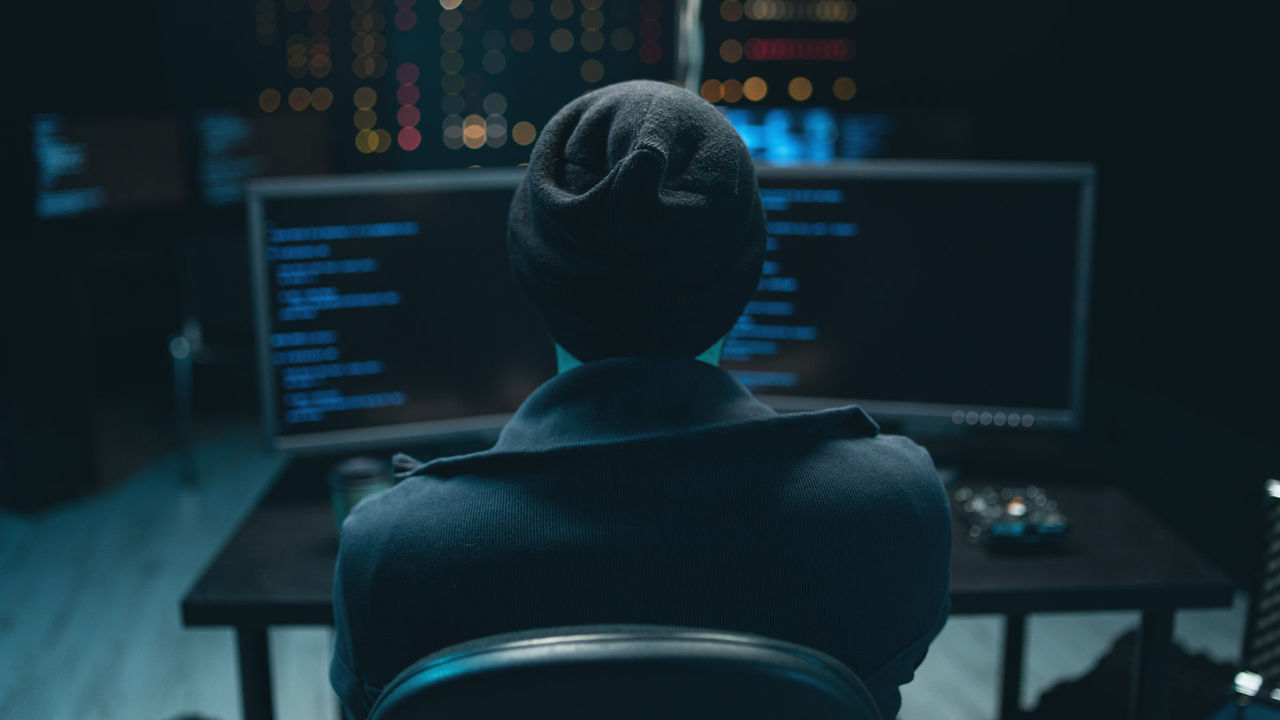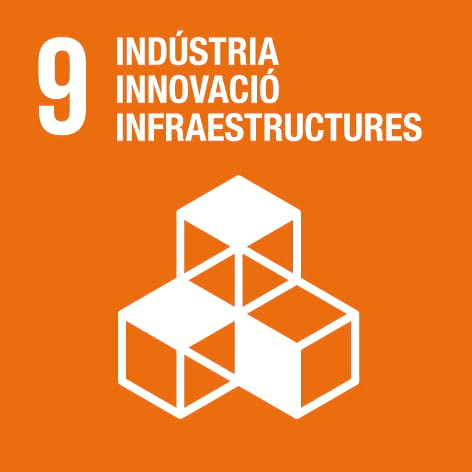New project to protect the internet from fake content and reduce cyberattacks
A collaboration between the UAB and the UOC, with INCIBE, has launched the DANGER project in order to increase the security and reliability of networksDANGER will create solutions for screening fake and malicious content, protecting Internet of Things devices and cryptocurrency transactions, and improving the security of 5G networks

A team of researchers with members from the Universitat Oberta de Catalunya (UOC) has started a new research project to improve network security, using tools that analyse information and identify malicious content for subsequent filtering.
The team, led by the Universitat Autònoma de Barcelona (UAB), is launching DANGER two-year project (Cybersecurity for the detection, analysis and filtering of fake or malicious content in hyperconnectivity environments), to carry out high level research in specific areas of the field of cybersecurity, promoting its valorisation and transfer to society and the production sector, as well as its dissemination to different audiences. The UOC's participation is being coordinated by full professor David Megías, director of the Internet Interdisciplinary Institute (IN3), and Helena Rifà, member of the Faculty of Computer Science, Multimedia and Telecommunications, who are both researchers in the K-ryptography and Information Security for Open Networks (KISON) research group. This initiative is possible as part of the public co-funding project launched by the National Cybersecurity Institute (INCIBE), which depends on the Ministry for Digital Transformation and Civil Service, through the Secretary of State for Digitalisation and Artificial Intelligence, have launched the DANGER project which deals with cybersecurity for the detection, analysis and filtering of fake or malicious content in hyperconnectivity environments.
"The project addresses growing digital threats, such as misinformation and cyberattacks, which pose significant risks to society. The spread of fake content undermines trust in institutions, while cyberattacks can lead to the theft of sensitive data and outages in essential services," explained Jordi Herrera Joancomartí, the coordinator of the project and professor in the Department of Information and Communications Engineering at the UAB. "The project also aims to preserve the integrity of information in a digital world in which data manipulation is easy. By developing tools to identify and fight against misinformation, the project will promote a more reliable and secure online environment, where users can trust the veracity of the information they consume."
The fight against misinformation
The DANGER project, which has been approved by the Spanish National Cybersecurity Institute (INCIBE), will create solutions for identifying fake content which use machine learning in order to protect social media users and content creators from deep fakes. Blockchain technology and its ability to provide immutable and transparent traceability of data and transactions will also be used to track and confirm the authenticity and integrity of multimedia content. Watermarks and credentials for multimedia content generated using blockchain technology can be valuable tools for ensuring the authenticity and integrity of content, and increasing trust in digital media.
Protection against cyberattacks
The increase in ransomware has been linked to the emergence of cryptocurrencies as a means of payment to collect ransoms for hijacked data. The number of ransomware attacks has grown exponentially since its appearance and entry into widespread use, and estimates of losses due to this type of malicious code are constantly increasing: in 2021 they amounted to $20 billion.
An effective strategy for reducing this type of attack is to make ransoms for data hijacking difficult to collect. In order to prevent the spread of ransomware and reduce its effectiveness, the researchers will be examining cryptocurrency transaction systems in order to provide tools that can track them and identify abuse.
"One of the project's main difficulties is the constantly changing nature of the threats. Any solution that the project develops must be flexible and adaptable in order to deal with new forms of misinformation and emerging vulnerabilities. The project is also technically very complex. Developing systems to detect fake content, provide protection against ransomware, security in cryptotransactions and other aspects involves advanced technologies and complex technical concepts," the researchers pointed out.
“One of the project's main difficulties is the constantly changing nature of the threats. Any solution that the project develops must be flexible and adaptable in order to deal with new forms of misinformation and emerging vulnerabilities”
Security in cryptotransactions
However, nefarious purposes account for a very small proportion of cryptotransactions compared to their legitimate use. The project will seek new solutions in order to protect users who use these new payment mechanisms legitimately in order to boost the digital economy and ensure its growth. To that end, it will analyse the quality of payment systems to provide them with the scalability, security and privacy that users need.
Security for the Internet of Things
The connected devices that make up the Internet of Things (IoT), such as sensors and wearables, are often very simple and do not implement effective security measures, thus facilitating cyberattacks.
Over the course of the project, the researchers will develop systems to detect, analyse and identify attacks in IoT environments. These systems use artificial intelligence and machine learning techniques to continuously monitor and analyse device network traffic. When they identify suspicious patterns and abnormal behaviour they can take preventative measures, such as blocking malicious traffic or alerting the user.
Security in 5G networks
Mobile connectivity for 5G networks also poses new challenges in terms of trustworthiness that traditional security measures may not be able to address effectively. The project will focus on creating a decentralized communications infrastructure using blockchain technology, with end-to-end security protocols that guarantee the confidentiality of the information that travels through the network.
DANGER is a project coordinated by the UAB, with the participation of the UOC, within the framework of the call by the Spanish National Cybersecurity Institute (INCIBE). The project is funded by the Spanish Ministry of Economic Affairs and Digital Transformation and by the European Union's Next Generation funds.
Global Programme for Innovation in Security
As part of the Global Programme for Innovation in Security, INCIBE has the specific mission to drive cybersecurity capacity in society and in the economy in general through a plan to promote and generate knowledge in the production sector, and in particular to establish synergies between the social and economic areas of cybersecurity. To do so in 2018 a programme of grants was launched for teams carrying out advanced research in cybersecurity. As a follow-up to this initiative on 5 December 2022 there was a public call for collaboration in the promotion of Strategic Cybersecurity Projects in Spain. These strategic projects offer a way to provide specific solutions to some of the biggest scientific and technological challenges in our society and in the economy. They aim to promote the application of research findings and innovation combining new forms of governance and collaboration as well as including the involvement of citizens and the social and production fabric.
Cybersecurity Chair
The INCIBE also approved the new ARTEMISA Cybersecurity Chair, with the involvement of the UOC and coordination by Pompeu Fabra University, to reinforce teaching, research and knowledge transfer in this field in the public and private sectors. ARTEMISA also aims to promote the social culture of cybersecurity and create vocations in this sector, especially among girls.
This initiative is carried out with funds from the Recovery, Transformation and Resilience Plan financed by the European Union (Next Generation), the Government of Spain's project that sets out the roadmap for the modernization of the Spanish economy, the recovery of economic growth and the creation of employment for sound, inclusive and resilient economic reconstruction after the COVID-19 crisis, and to meet the challenges of the next decade.
DANGER contributes to UN Sustainable Development Goals (SDG) 4, Quality Education; 5, Gender Equality; and 9, Industry, Innovation and Infrastructure.
UOC R&I
The UOC's research and innovation (R&I) is helping overcome pressing challenges faced by global societies in the 21st century by studying interactions between technology and human & social sciences with a specific focus on the network society, e-learning and e-health.
Over 500 researchers and more than 50 research groups work in the UOC's seven faculties, its eLearning Research programme and its two research centres: the Internet Interdisciplinary Institute (IN3) and the eHealth Center (eHC).
The university also develops online learning innovations at its eLearning Innovation Center (eLinC), as well as UOC community entrepreneurship and knowledge transfer via the Hubbik platform.
Open knowledge and the goals of the United Nations 2030 Agenda for Sustainable Development serve as strategic pillars for the UOC's teaching, research and innovation. More information: research.uoc.edu.
Experts UOC
Press contact
-
Rubén Permuy





